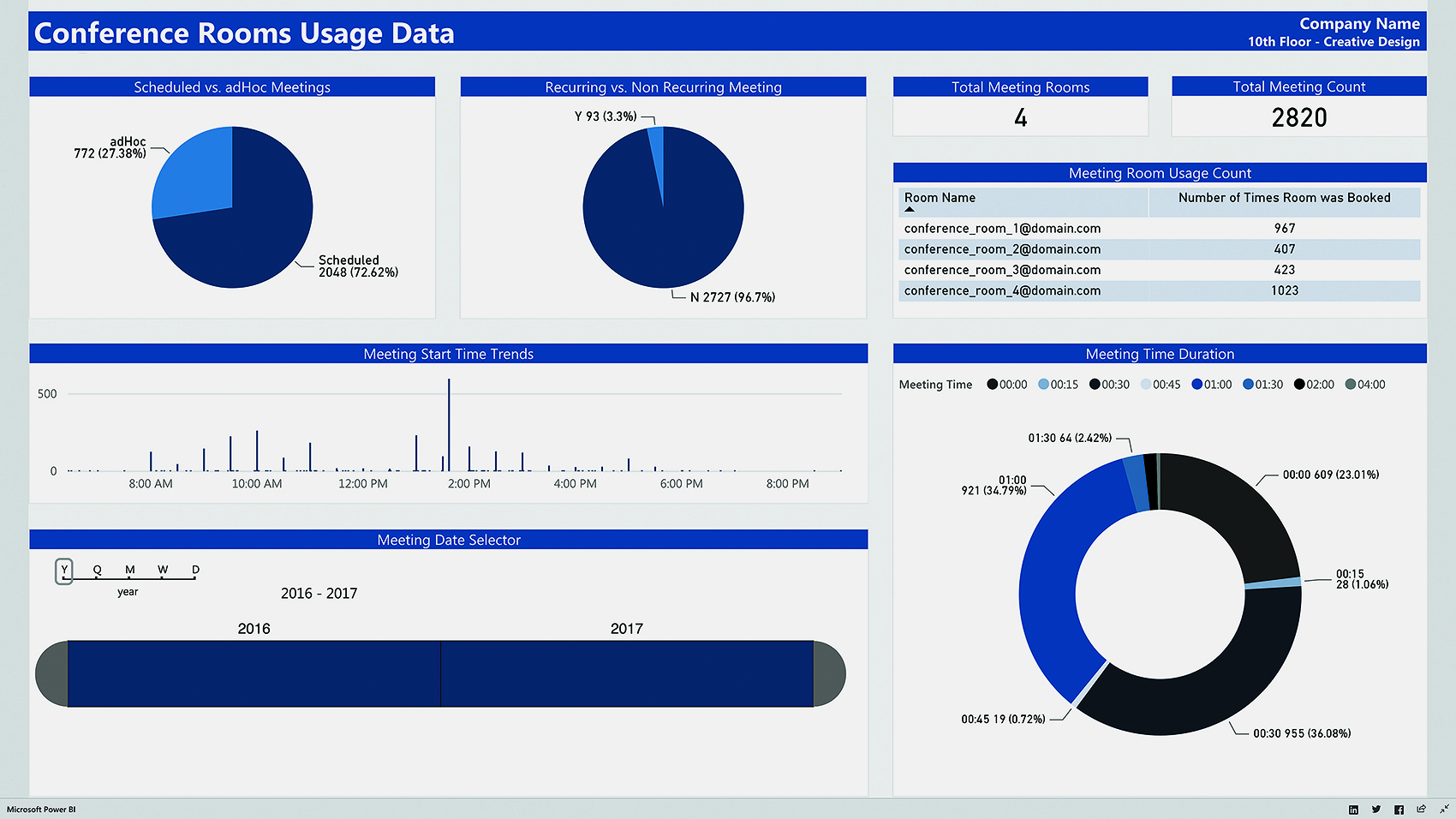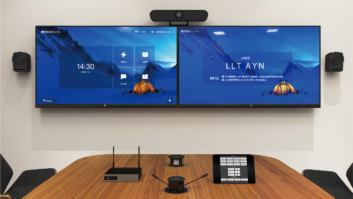Ian McMurray looks at the background that has seen meeting room scheduling systems become increasingly commonplace
That we do hate meetings is largely undisputed. It’s estimated that we spend around 35 per cent of our working time in them. 67 per cent of meetings are deemed to have failed in their objectives (if they had any to start with…). More than 90 pEr cent of us do something else in meetings, like checking email. (And, apparently, close to 40 per cent of us admit to having fallen asleep in them.) And: if the meeting room equipment doesn’t work like it’s supposed to? A recent study by Barco found that nine in ten office workers experience seriously elevated stress levels when dealing with troublesome technology.
The inexorable rise of the huddle room – with its emphasis on impromptu, informal collaboration – has perhaps caused us to lose focus on the fact that formal, scheduled meetings continue to be the lifeblood of many organisations. It’s perhaps also true that, with mobile or remote workers making up an increasingly large part of the workforce – resulting in increasing numbers of conference calls – we’ve lost sight of how many meetings still take place in the physical, rather than virtual, world.

Easier over time
Scheduling meetings has unquestionably become easier over time. Where once, it was possible to spend hours trying to get consensus from colleagues on their availability for a meeting – which inevitably meant the meeting would take place far further in the future than was desirable – the advent of shared calendars in corporate systems such as Microsoft Outlook or Google G Suite has been somewhat transformative. Everyone’s availability is just a few clicks away – in theory, at least. Both systems also allow the creation of meeting room calendars too, availability of which can similarly be ascertained – and a date/time blocked out.
But still… A walk through the corridors of any large headquarters will invariably find meeting rooms that have allegedly been booked – but are unoccupied. Further along, there’s a heated discussion taking place about who reserved a room. Further along still, the printed sign on the meeting room door indicates it’s in use – but there’s no-one home. And, round the corner, a small group of people are anxiously peering into each meeting room in the hope of finding one spare.
You may even stumble across a lost soul – new to the organisation, perhaps – already late for an important meeting in a room THEY can’t find. (That’s the stuff of nightmares…)
Despite the technology frustrations noted above, the in-meeting experience has unquestionably improved with manufacturers increasingly focusing on ease of use, plug and play “it just works” solutions that even the most technology-challenged can navigate. A report earlier this year from BT revealed that 80 per cent of executives would prioritise increased productivity if they were CEO – and 90 per cent felt that mobile tools and collaboration services are achieving that goal.
But what of the pre-meeting experience? Have the same strides been made in making us more productive in arranging meetings – and especially in the fraught area of booking rooms, which always seem to be in short supply? Can some form of automation address that latter problem? This month, we feature eight providers of meeting scheduling systems to help you compare and contrast their offerings.
Devil in the detail
All, inevitably, share certain basic functionality. Some are hardware only, some software only, some combine the two. All are Microsoft Exchange-compatible. The devil, inevitably, is in the detail – the differentiators that separate one solution from another. That might be from the sustainable nature of e-ink displays through ease of installation to customisation options. In the corporate environment, security will be a key consideration. Given the workforce mobility noted previously, the availability of a mobile app that complements the solution could be critical. The ability to integrate with occupancy sensors – such that a room that appears to have been booked can be identified as unoccupied, and therefore released – can obviate one of the biggest frustrations in trying to arrange a meeting.
Many of the solutions feature a reporting capability to provide management with insight into room usage – information that can be critical in planning future space needs. That could be as valuable as the room scheduling system itself.
And, of course, there’s pricing… In many cases, it’s possible to get started with just a single screen, costing little more than €1,000. Some manufacturers offer outright purchase, others look for a regular licensing fee. However: without exception, these solutions appear highly affordable – and if productivity is indeed increased, and space usage improved, then the outlay should be looked on as an investment, rather than a cost.
Somewhat beyond the scope of our showcase is BookingLive, an example of how a simple room booking solution can become so much more by extending its reach far beyond the walls of the enterprise environment. Hosted by Amazon Web Services and said by the company to be the UK’s best-selling meeting and room reservation system as well as being at the heart of local government digital transformation projects, its breadth of capability isn’t for everyone – but it’s a clear indication of what’s possible.
No meeting room scheduling solution will mean that every single meeting you attend will ensure you don’t endure death by PowerPoint, that it will be worth your time, or that it will deliver the outcomes it was supposed to deliver – but, given that meetings are something of a necessary evil, it can at least make some contribution to increased productivity and your life somewhat easier. Those benefits in themselves are certainly worth having.
CLICK HERE: Finding the right solution: 8 of the best meeting scheduling technology solutions







